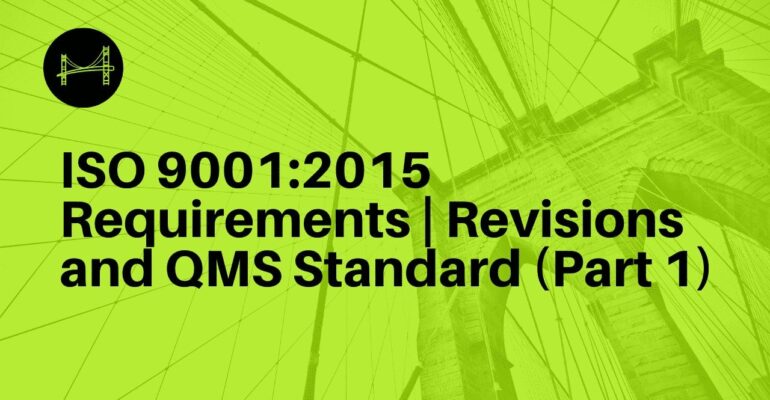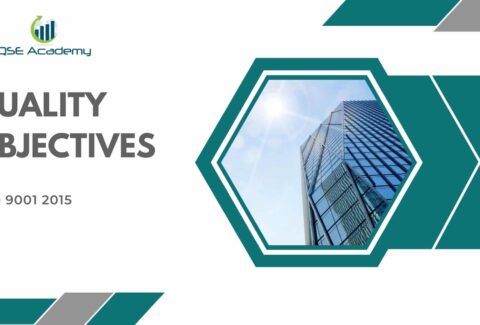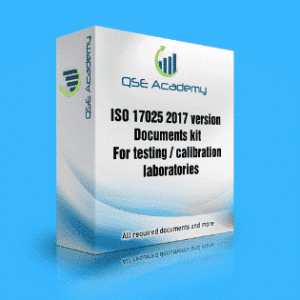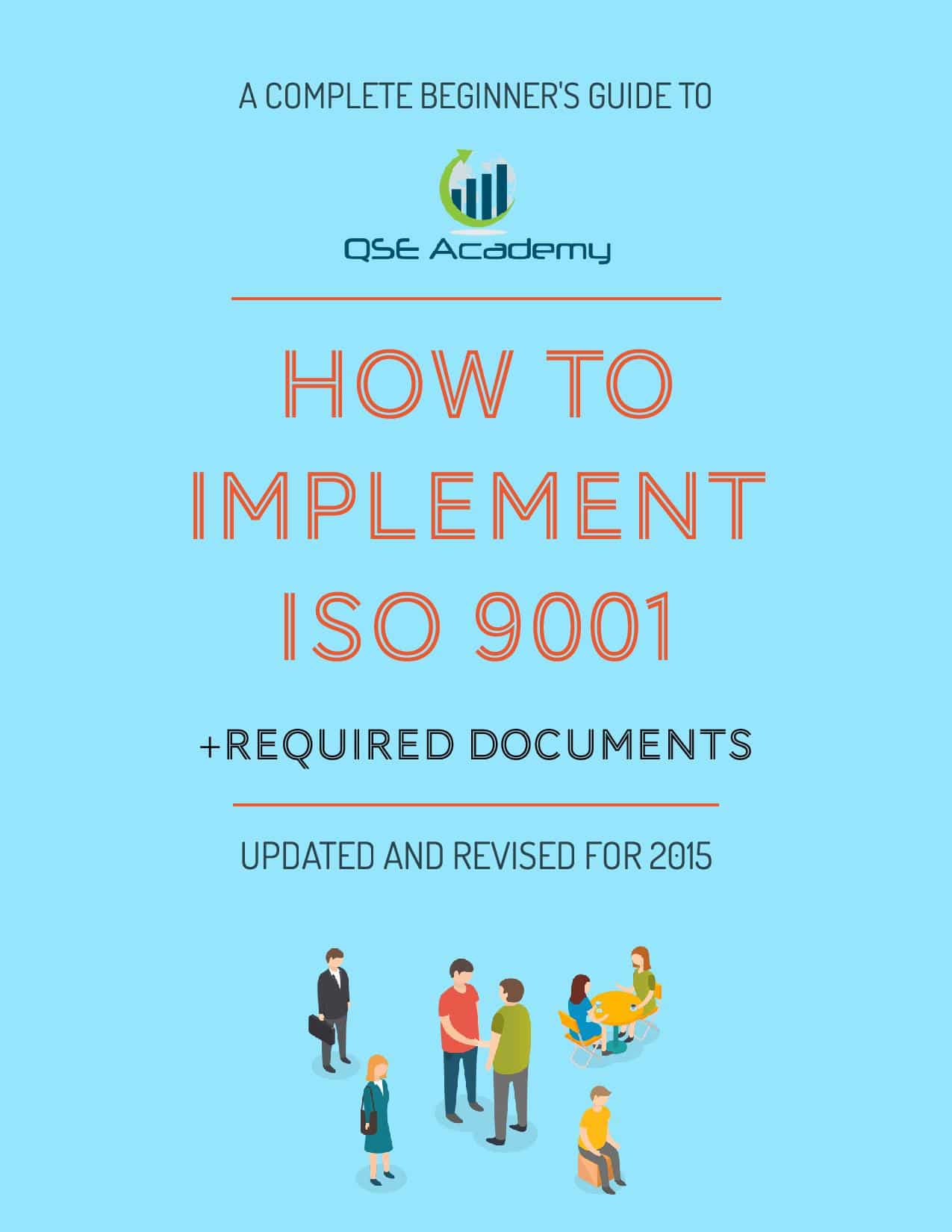ISO 9001 2015 Requirements (Part 1)
ISO 9001 requirements
In order to catch up with the global demands, it’s wise for your organization to understand changes in the ISO 9001:2015 requirements and Quality Management System standards.
The 2015 version includes requirements about internationally recognized management principles, concepts, and practices into a set of standardized requirements for a QMS.
Due to this, QSE Academy has prepared a two-part article explaining every essential revision that will affect your ISO 9001 implementation. We’ve also created toolkits that will aid you in applying the changes.
What Are the Set of Standardised Requirements?
These describe controls that concentrate on improving the capacity of an organization to produce services or products to boost customer satisfaction.
These requirements:
- constantly fulfill the quality requirements of customers;
- meet relevant regulatory and statutory requirements;
- improve performance in pursuit of these goals.
Revisions in the ISO 9001:2015 requirements focus on improving the management system and processes of your organization.
However, it does not identify any requirement for the quality of products or services because customers normally set the requirements.
Nevertheless, it is expected that an organization with an effective ISO 9001 based QMS will develop its capability to fulfill customer and regulatory requirements.
Furthermore, ISO 9001 requirements are complementary to the contractual and regulatory requirements of customers.
Did you know that in the past few years, industry groups have established sector-specific applications of the ISO 9001 standard? These include health and safety, automotive, telecommunications, aerospace, environmental, among others.
Therefore, those implementing an ISO 9001 based QMS should guarantee that certain requirements from regulatory agencies and customers are met.
Additionally, these sector-specific standards use ISO 9001 requirements as their foundation, and then include new requirements or strengthen ISO requirements.
Why a New Version of the ISO 9001:2015 Requirements Was Issued?
A periodic review is conducted to identify whether ISO 9001 remains significant in its application to the business environment and its needs. It also defines what requirements must be updated, removed, or added.
The last review in 2008 considered minor changes, which were dealt with clarification instead of adding new requirements.
The ISO 9001:2015, Quality Management System – Requirements is the fifth edition of the ISO 9001 standard since it was first published in 1987.
Yet, a major change was considered in this latest edition because of:
- The need to make sure the new standard mirrors the needs of all relevant interested parties.
- Better focus on providing value for the organization and its customers.
- The need to reflect and adjust to the progressively complex and dynamic business environments.
- Distinguishing the risk management thinking underlying the preventive focus of previous versions of the standard to achieve objectives.
- The advent of new technologies.
- More complex supply chains.
- The workforce’s increasing cultural diversity.
- Increased demand from organizations to have a common format and language among different management system standards.
- The mindfulness regarding maintainable development initiatives towards a reliable foundation for the future.
- Less emphasis on documentation.
Who is Responsible for Revising the ISO 9001:2015 Requirements?
The changes were under the responsibility of the ISO Technical Committee no.176, Sub-committee no.2 (ISO/TC 176/SC2).
It is also in partnership with industry and quality experts nominated by ISO Member bodies, and representing all interested parties.
Rewards of the Changes in the ISO 9001:2015 Requirements
The main advantage of the changes is a greater emphasis on producing conforming products and services.
Consequently, your organization will become a more user-friendly, knowledge-based entity.
Since your organization will attain better leadership engagement, you will achieve more structured planning for setting objectives. As a result, the management review is aligned with organizational results.
Similarly, the revisions address supply chain management more effectively. Your organization can then address organizational risks and opportunities in a structured approach.
This is also an opportunity to create an integrated management system that addresses other elements such as business continuity, health and safety, environment, and the like.
Lastly, changes in the ISO 9001:2015 means a chance for flexible documented information.
What Are the Key Changes in the ISO 9001:2015?
Keep in mind that the ISO 9001:2015 concept still applies to any type of organization, regardless of the type, size, sector, products, and services.
However, one of the key changes is embracing a 10-clause structure and core text consistent with all other ISO management systems.
You’ll also see there’s improved compatibility with the non-manufacturing users and the service sector.
In addition, the revision addressed the need to visibly comprehend the organization and its context. This is to prevent a ‘one size fits all’ approach to the implementation and application of a QMS.
Another vital change is the acknowledgment that while precautionary action was inherent throughout the standard, there was a need to make it more clear by applying risk-based thinking.
Likewise, there was a need to consider additional factors in identifying the applicability and boundaries of the QMS.
The revision also worked on improving the process approach’s application and understanding through the application of risk-based thinking in combination with the context of the organization:
- Focus on attaining anticipated process results to improve customer satisfaction;
- A change in terminology from the use of the terms ‘documents’ and ‘records’ to ‘documented information’;
- Change to the use of the terms ‘purchasing’ and ‘outsourcing’ to the term ‘externally provided products and services’.
- Allowing flexibility in providing documented information;
Furthermore, a broader scope has been included in pursuing opportunities for improvement.
Despite the need for continual improvement, the necessity for strategic improvements through reorganization, innovation, change, and technologies was added to improve performance, products, and customers.
Additionally, the standard improved the wording of leadership requirements to put an emphasis on leadership requirements:
- Focusing on change management throughout the standard;
- Creating and preserving the stability of organizational knowledge;
- Specifying requirements associated with post-delivery activities.
Moreover, the scope of the requirements has been made more specific in order to analyze and evaluate information and data collected from monitoring and measurement.
Also, it addressed the need to monitor trends in customer satisfaction, operational performance, and management review.
Finally, changes in the ISO 9001:2015 include diminishing manufacturing sector terminology for more acceptability and application by the non-manufacturing and services sectors.
Changes in the ISO 9001:2015 Structure
The new structure has been aligned with the ISO-developed 10-clause high-level structure.
This aims to aid enhanced coordination among the various ISO management system standards.
Hence, all ISO management system standards will now adopt this structure. For example, the next revision to ISO 14001 will adopt this same structure, which is based on the PDCA methodology.
Subsequently, it will be effortless for organizations to assimilate the similar requirements of other ISO management system standards within a single system.
Likewise, the new structure should deliver substantial economies in terms of cost and effort in system development, implementation, maintenance, and certification.
This chart illustrates some of the vital structural differences between ISO 9001:2015 and the current ISO 9001:2008.
| Structure Comparison Chart | |
| ISO 9001:2015 | ISO 9001:2008 |
| Scope | Scope |
| Nominative References | Nominative References |
| Terms and definitions | Terms and definitions |
| Context of the organization | Quality Management System |
| Leadership | Management responsibility |
| Planning | Resource management |
| Support | Product realization |
| Operation | Measurement, analysis, improvement |
| Performance evaluation | |
| Improvement | |
Changing ‘Product’ to ‘Product and Service’
ISO 9001:2008 had made it clear that the term ‘product’ also includes service. Thus, there’s no effect in practical terms.
The change implies a far wider use of the standard outside the manufacturing industry. This also accentuates its suitability in the service sectors.
Changes in Terms of Planning
ISO 9001:2015 has expanded the coverage of planning by requiring an organization to address quality objectives, risks and opportunities, and planning of changes throughout the organization.
Organizations are expected to take advantage of opportunities such as new technologies and products.
However, this has to be performed in a controlled manner. It should also be balanced against risks that could possibly cause undesirable side-effects.
Changes in the Documentation Requirements in ISO 9001:2015
The standard no longer mentioned specific documented procedures. Therefore, it is your organization’s responsibility to retain documented information to support the operation of processes.
Documented information assures that the processes are being executed as planned.
FREQUENTLY ASKED QUESTIONS
Is there a need to change the QMS structure and terminology of our organization to reflect the changes in the ISO 9001:2015 PDF?
This standard doesn’t require any structure or terminology to be used in developing and documenting the QMS of your organization.
Thus, your organization can choose to use terminology and structure that suit your needs.
The structure of clauses aims to provide a logical presentation of requirements, rather than a model for documenting an organization’s objectives, processes, and policies.
It may be more important to customers if the QMS documented information’s content and structure relate to the processes and information of your organization.
As you can see in the following table, there are main differences in terminology between the 2008 version and the 2015 edition.
| Products and services | Products and services |
| Exclusions | Not used |
| Management Representative | Not used |
| Documentation, quality manual, documented procedures, records | Documented information |
| Work environment | Environment for the operation of processes |
| Monitoring and measuring equipment | Monitoring and measuring resources |
| Purchased product and services | Externally provided product and services and services |
| Supplier | External provider |
Is a Quality Manual Still Required in the New Standard?
A quality manual is an appropriate and convenient way to describe an organization’s QMS.
The revised standard does not precisely indicate a quality manual, but using a quality manual helps an organization keep documented information for the effectiveness of the QMS.
Why Has Management Review Been Moved to Performance Evaluation?
The sequence of the ISO 900:2015 is based on the PDCA methodology. Management review assesses the performance of a QMS. Hence, a management review must come under performance evaluation after requirements for evaluation and analysis of QMS performance.
How to Report the System’s Performance to the Top Management Following the Exclusion of the Title of Management Representative?
Despite the removal of the specific requirement for a management representative, the top management must guarantee that roles and responsibilities are given for reporting on the performance of the QMS.
Why Has Risk-Based Thinking Been Included into the Standard?
ISO 9001:2015 used the phrase risk-based thinking to introduce the requirement for addressing the question of risk and its control.
ISO 9001 has always implied the concept of risk by requiring an organization to manage its business, as well as plan and implement its processes to prevent unsolicited results.
Managing risk depends on an organization’s business context. Organizations typically do this by focusing on planning and controlling processes that have the largest effect on the quality of products and services.
The use of the phrase risk-based thinking intends to make it clear that formal risk assessment and risk-management methodologies are not necessary for all organizations and business situations.
These are only some of the changes found in the ISO 9001:2015 QMS standard.
There are still other aspects your organization must understand, especially the process approach, organizational knowledge, timeframe for compliance, and auditors. All of these will be answered in the next article.
In the meantime, you can speed up this process by obtaining our systematically curated toolkits for all your ISO needs.













